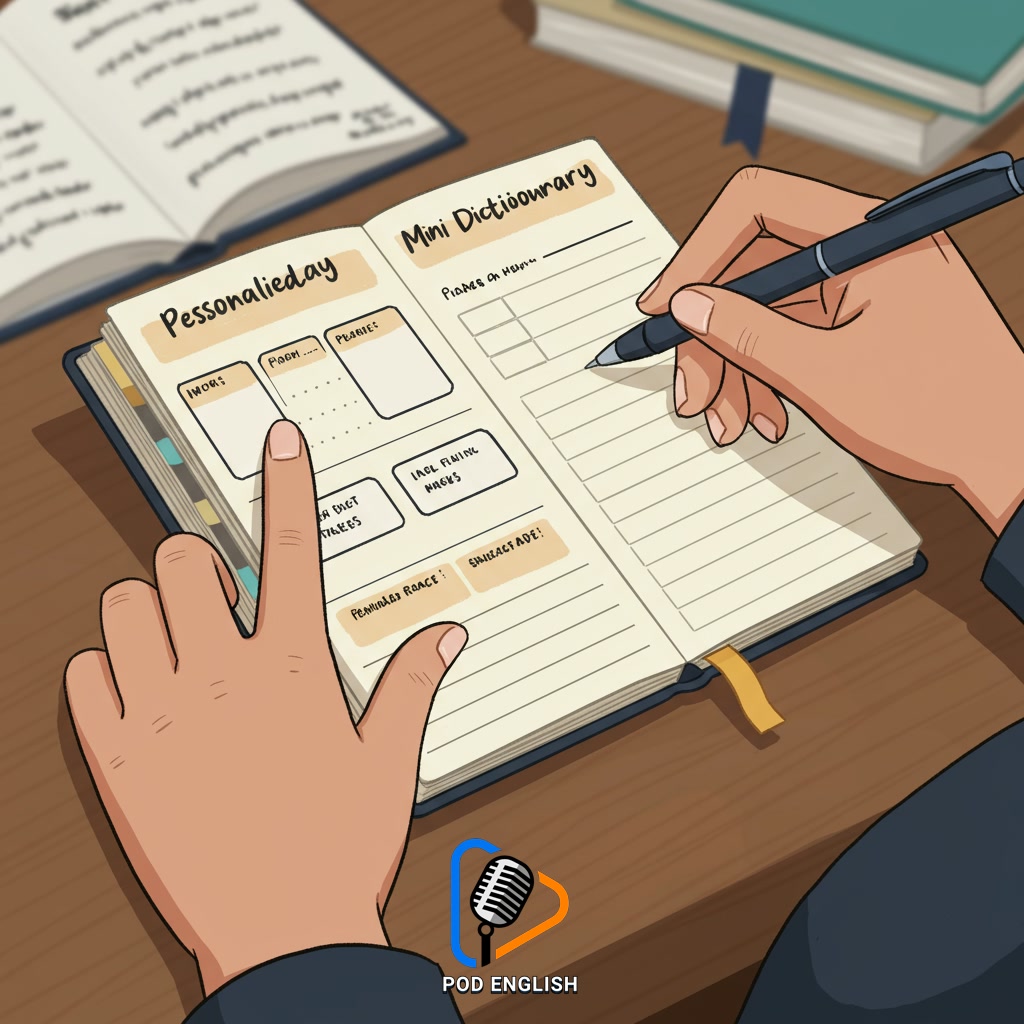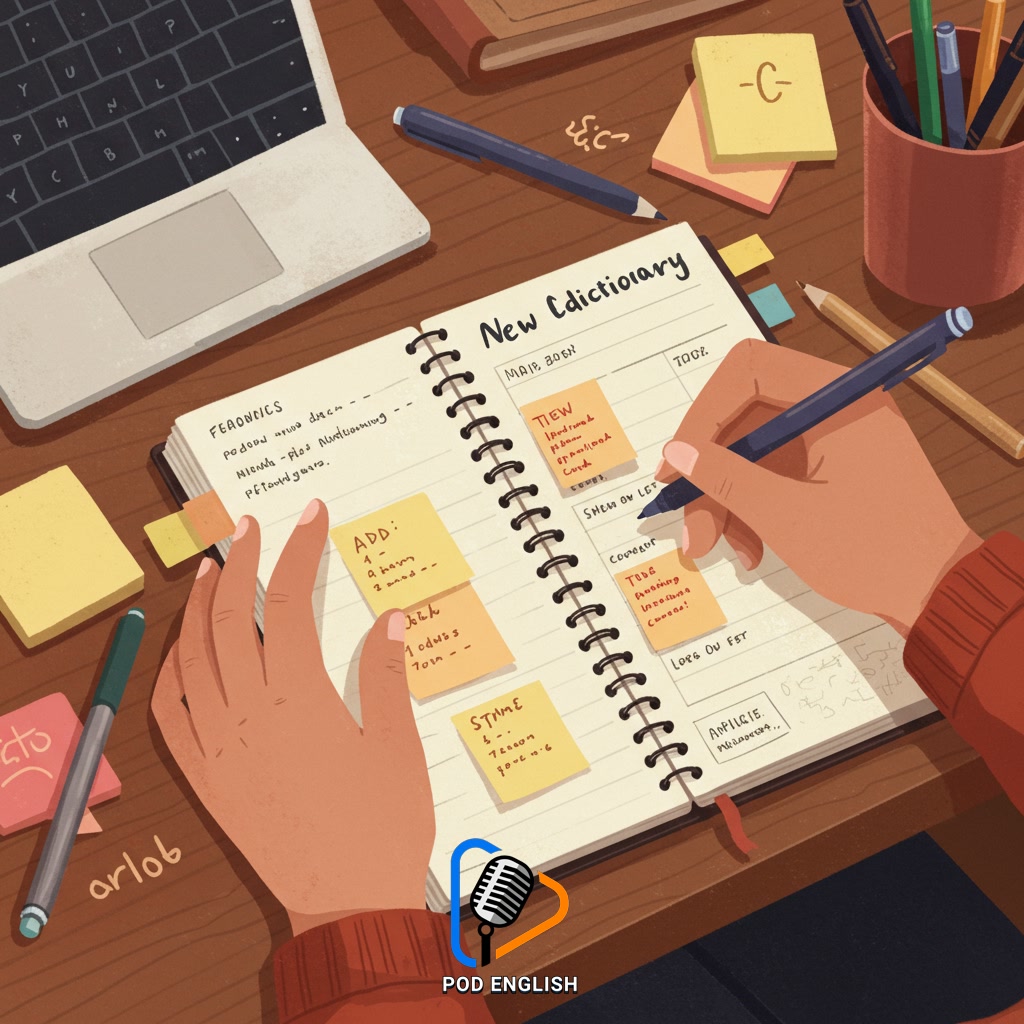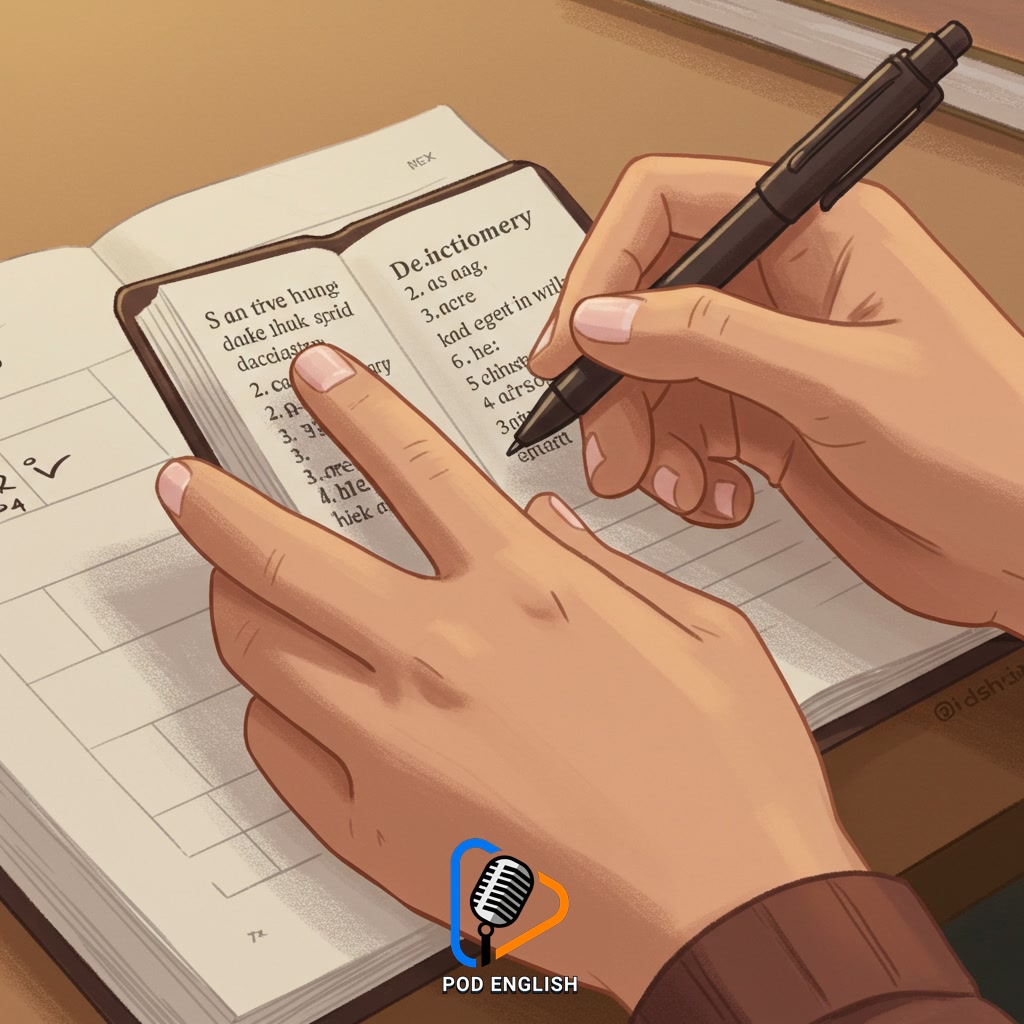Learn English
Learn English: Simple Steps to Create Your Own Personalized Mini-Dictionary

This content provides simple steps for creating a personalized mini-dictionary. Such a dictionary serves as a valuable tool for enhancing English vocabulary and comprehension. By following these easy instructions, learners can build a customized resource tailored to their specific needs and learning pace. This personalized approach supports effective vocabulary acquisition as part of the English learning process.
Table of Contents
- Section 1: Why Create a Personalized Mini-Dictionary for English Learning?
- Section 2: Step 1: Choose the Right Format and Tools
- Section 3: Step 2: Decide What Information to Include for Each Entry
- Section 4: Step 3: Develop Your System for Adding New Words and Phrases
- Section 5: Step 4: Effectively Use and Review Your Mini-Dictionary
- Section 6: Tips for Maintaining and Maximizing Your Mini-Dictionary
Section 1: Why Create a Personalized Mini-Dictionary for English Learning?
Creating your own personalized mini-dictionary is a powerful way to take control of your English learning journey. Unlike standard dictionaries that contain thousands of words you may never use, your mini-dictionary focuses exclusively on the vocabulary *you* encounter and *need* to learn. This targeted approach makes learning more efficient and relevant to your daily life or studies. Writing down new words, their meanings, and example sentences in your own words helps solidify them in your memory far better than simply reading definitions. It becomes a dynamic, portable tool that reflects your unique learning path and helps you actively engage with the language, boosting your confidence and retention.

Why Create a Personalized Mini-Dictionary for English Learning?
Section 2: Step 1: Choose the Right Format and Tools
The first crucial step in creating your personalized mini-dictionary is deciding on the format and the tools you will use. This choice depends entirely on your personal preferences and learning style. You could opt for a simple physical notebook and a pen, which offers the tactile experience of writing and easy portability. Alternatively, you might prefer a digital format, such as a document on your computer, a dedicated vocabulary app on your phone, or even a spreadsheet. Digital options often allow for easy searching, editing, and adding new entries. Consider what is most convenient and motivating for you. The best tool is the one you will use consistently to build your vocabulary.

Step 1: Choose the Right Format and Tools
Section 3: Step 2: Decide What Information to Include for Each Entry
Following the decision on format and tools in Step 1, the next crucial step is to determine exactly what kind of information you will include for each word entry in your personalized mini-dictionary. This is where you tailor the dictionary to your specific learning needs. For each new English word or phrase you encounter, you’ll definitely want to record the word itself. Beyond that, consider adding its part of speech (like noun, verb, adjective), a simple definition that makes sense to you (either in English or your native language, but English definitions are great practice!), and perhaps most importantly, an example sentence showing how the word is used in context. You might also include synonyms, antonyms, or notes on pronunciation if helpful. Remember, there’s no single right way; choose the details that you find most useful for understanding and remembering the word. Including these key pieces of information for each entry turns your dictionary into a powerful study tool.

Step 2: Decide What Information to Include for Each Entry
Section 4: Step 3: Develop Your System for Adding New Words and Phrases
After deciding what information to include for each entry, the next vital step is to establish a consistent system for adding new words and phrases to your mini-dictionary. Don’t wait until you have a long list; try to add them as you encounter them in reading, listening, or conversation. Think about how you will organize new entries – alphabetically, by topic, or chronologically? Having a clear process makes it easy to keep your dictionary updated and prevents it from becoming a messy collection. Make adding new vocabulary a regular habit in your English learning routine. This systematic approach ensures your personalized resource grows steadily and remains a useful tool.

Step 3: Develop Your System for Adding New Words and Phrases
Section 5: Step 4: Effectively Use and Review Your Mini-Dictionary
Creating your mini-dictionary is only the beginning; the key to success lies in actively using and regularly reviewing it. Don’t just fill it with words and forget about it. Make it a habit to refer to your mini-dictionary whenever you encounter a word you’ve added or need to recall a definition or example sentence. Integrate its use into your daily study routine. Equally important is setting aside time for review. Go through your entries periodically – maybe once a week or every few days. Test yourself on the words, try to use them in new sentences, or cover the definition and see if you can remember it. Consistent use and review are crucial for moving words from your temporary memory into your long-term vocabulary.

Step 4: Effectively Use and Review Your Mini-Dictionary
Section 6: Tips for Maintaining and Maximizing Your Mini-Dictionary
Creating your mini-dictionary is only the beginning; the key to success lies in actively using and regularly reviewing it. Don’t just fill it with words and forget about it. Make it a habit to refer to it often, perhaps daily or weekly. Set aside dedicated time for reviewing entries. Try to use the new words you add in your speaking or writing practice. Consider grouping words by topic or theme to make connections easier. Regularly update your dictionary, adding new words encountered and perhaps removing those you’ve mastered. This ongoing interaction transforms your mini-dictionary from a simple list into a dynamic tool that truly supports your vocabulary growth and helps you learn English effectively.

Tips for Maintaining and Maximizing Your Mini-Dictionary













